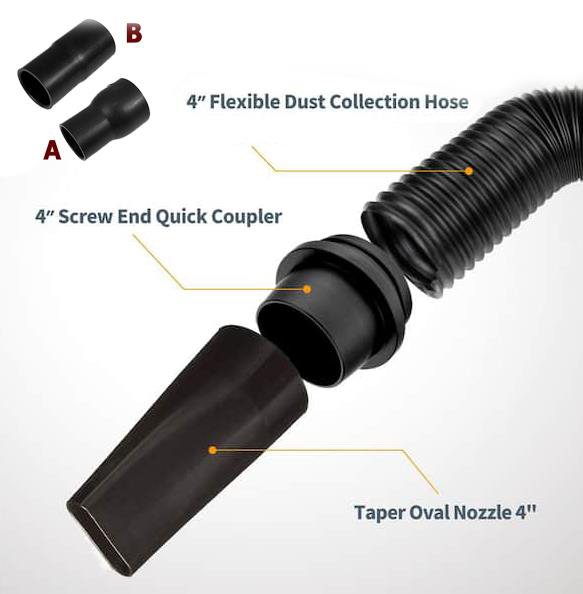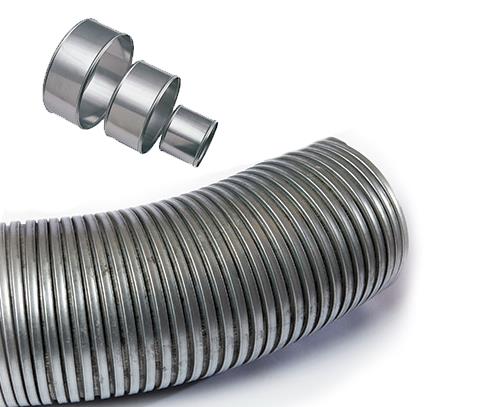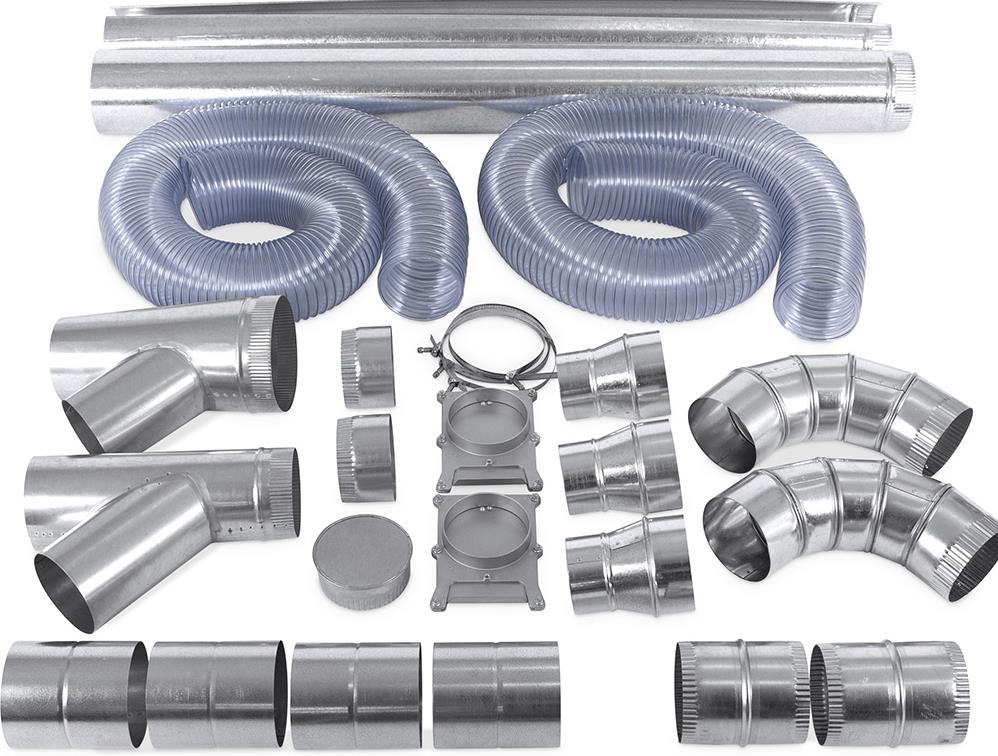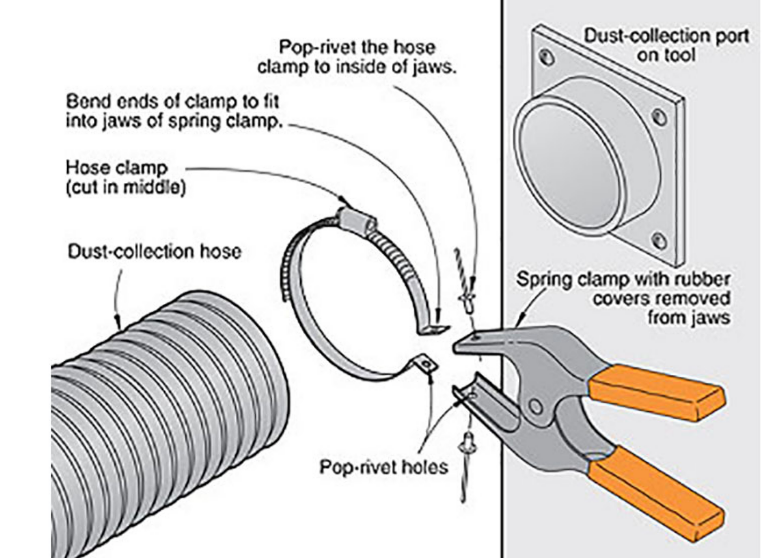Dust collector hose lengths vary depending on your dust collection system, but there are some general rules of thumb you can use to determine what size of dust collection hose you need and how long it should be.
In this guide, we’ll look at all the factors that determine the length of dust collector hoses and show you how to decide what size you need based on your filters or system configuration.
How Long Can a Dust Collector Hose Be?
Dust collector hoses come in various lengths and diameters to suit different needs. You can determine your hose’s size by noting the distance from your dust collector tools to the filters or furthest point where the material will be deposited or picked up.
For example, if you are using your flexible hose to transport material from one machine that is 5 feet away from the dust collector, a 6-foot-long hose will be sufficient. If you are using your hose to transport material from one system 15 feet away from the dust collector, a 16-foot-long hose will be needed.
Does The Material Have Any Impact?
How long your dust collection hose product should also depend on what kind of material and temperature range you’ll be using it in. For example, rubber hoses are ideal for high temperatures but don’t work well with low ones. A PVC connect will do well with lower temperatures but won’t last long at high ones. A stainless steelconnect has good resistance to both extremes!

How Do I Know What Size of Dust Collector Hose I Need?
The size of the collection hose is determined by how much material it can transport at once. When considering what length of collection hose you need, think about how much material your machine produces and how far away it will be from the dust collector.
Dust collector hoses come at different prices and in a variety of sizes, but they can usually be categorized into three main ranges: small-sized (less than 10 feet), medium (10-30 feet), or large (more than 30 feet).
Generally, medium-sized hoses will work for most home dust collection systems and smaller industrial dust filters. Large-sized hose tools may be necessary if your system is producing large amounts of materials or is far from the dust collector.
What’s A Dust Collection Hose?

A dust collection hose is a tube that connects a dust collector to the machine creating dust. It is used to suck up and transport the dust created by machines like sanders, saws, etc. They are often found in construction sites and woodworking shops, producing harmful amounts of particles that need to be collected.
Fine particle collection hoses come at different prices and in different sizes, lengths, and diameters, depending on your use. If you’re using it for heavier-duty work like sanding or cutting, you’ll want a reinforced giant-diameter hose with more length to handle the heavy lifting.
However, a small-diameter collection hose will do if you use your system at home and not at a woodworking shop. When looking at size, keep in mind that the inside measurement of the flexible hose should match the outside dimension of your system’s attachments so it can fit snugly. You don’t want to buy something too big because then it won’t be as effective as something just suitable, and too small means that there will be an air gap which defeats the purpose.
What Is A Dust Collection Hose Used For?
A dust collection hose is a crucial part of your dust collection system. It transports the air and debris from the machine to the filter or cyclone. The reinforced hose should be as long as possible but never so long that it creates a point where material can back up and clog.
Larger-diameter hoses are usually more rigid and do not kink as easily. Smaller diameters are less expensive but will tend to coil. The recommended range for dust collection hoses is 3-10 ft., with 5-8 ft being the most common.
What Are the Different Types of Dust Collector Hoses?
One of the first things you may want to consider when buying a dust collection hose is what size and material you need. There are a few different options you can consider for your woodworking shop.
The most common types are PVC (polyvinyl chloride) and rubber hoses.
Rubber Hose
Reinforced rubber hoses are extremely lightweight and ideal for reduced turbulence, high temperatures and have a longer lifespan than PVC, but they can sometimes be too stiff to roll up easily.

PVC Hose
PVC HEPA hoses are more flexible but less durable or resilient, so they deliver well for low temperatures and shorter distances. They’re also cheaper than rubber hoses, so this might be your best bet if you’re on a budget.

Stainless Steel Hose
Another option is a stainless steel hose, which comes in two varieties: braided steel and solid steel.
A braided steel hose is excellent for higher-temperature environments like foundries because it’s stronger and more resistant to sparks.
Solid steel isn’t nearly as resistant to sparks, but it has a smoother exterior finish and doesn’t contain toxic chemicals that could leach out into the environment over time. So if you’re looking for a hose that will last the longest in an environmentally conscious way, this type is probably your best bet for dust collection.

What Makes a Good Dust Collector Hose?
A suitable dust collection hose is a durable one and should feature a durable outer layer. It should be flexible enough to withstand a bit of movement but not so pliable that it won’t be able to reach the end of its maximum length.
A suitable dust collection hose will also resist punctures, tears, abrasions, or other damages from objects that might come in contact with it. Finally, a good fine particle collection hose will have an inner lining resistant to water and chemicals.
Conclusion
Dust collector hoses are vital equipment in many industries, including mining and construction. Whether purchasing a new dust collection hose or replacing an old one, you must know what size is best for your dust collection system.
When purchasing a new reinforced hose, check with your manufacturer to ensure that you’re buying one with sufficient volume for your dust collection system or if they offer a larger-sized model.






